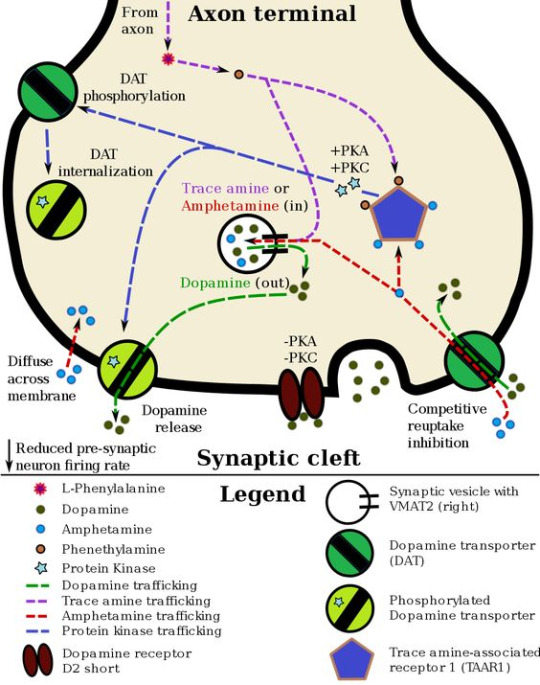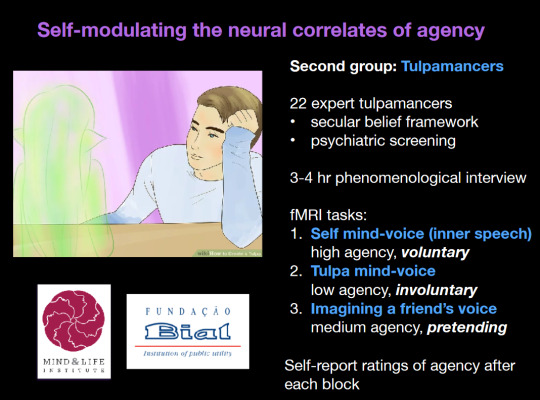#molecular pathology
Text
Molecular Pathology: Revolutionizing Diagnostic Accuracy at Our Lab
At NanoGene, we offer reliable and comprehensive diagnostic testing through FDA-approved, cutting-edge technology. One of the services we offer is dermatopathology. Many researchers choose our lab for flow cytometry needs. They don’t need to establish their lab for reading their cases. Get the details about these tests through our official website: https://nanogene.com/.
1 note
·
View note
Photo




Castanea dentata
I know i’ll live to see these get bigger than 20 dbh in my lifetime and that makes me smile knowing that i’ve helped do research on these.
For any botanist out there who is trying to work on something cool, working with TACF was one of my favorite internships. I worked with the South Carolina chapter doing an internship and I think you should help while the science is good.
There is also jobs out there that are through the ACF website and not TACF state chapter specific. https://acf.org/employment/
#tacf#acf#kentucky#castanea#castanea dentata#botany#forest#forestry#arboriculture#dendrology#forest pathology#plant pathology#genetics#molecular techniques
48 notes
·
View notes
Photo

Tome Sweet Tome
The surfaces of all cells in nature are festooned with a complex and diverse array of sugar chains (called glycans). These perform a wide variety of biological functions, from the proper folding of proteins to cell-to-cell interactions. Their ubiquity in nature underscores their essentialness to complex life.
This week, the fourth edition of “Essentials of Glycobiology” (the study of glycans) was published by Cold Spring Harbor Laboratory Press. It’s a continuation and updating of landmark work by a consortium of editors, led by Ajit Varki, MD, Distinguished Professor in the departments of Medicine and Cellular and Molecular Medicine at UC San Diego School of Medicine, with contributions from a number of UC San Diego scientists and physicians, including Jeffrey D. Esko, PhD, Distinguished Professor of cellular and molecular medicine; Pascal Gagneux, PhD, professor of pathology and anthropology, and Kamil Godula, PhD, associate professor of chemistry and biochemistry, and Amanda Lewis PhD, professor of obstetrics-gynecology and reproductive science.
Varki and Esko are also founding directors of the Glycobiology Research and Training Center (GRTC) at UC San Diego, established in 1999, and have recently handed over leadership to Lewis and Godula.
Glycobiology is a relatively new scientific discipline. The term was only coined in 1988, recognizing the combining of carbohydrate chemistry and biochemistry to focus on glycans, which have since proven to have a multitude of diverse and often critical roles in biology.
They have been linked to human origins and as a key evolutionary marker. They are found to both inhibit and promote tumor growth; and the presence of a particular sialic acid in red meat may be linked to increased cancer risk in humans. Another class of glycans called glycosaminoglycans have been shown by Esko and colleagues to be involved in COVID-19 coronavirus pathogenesis. The cover of the fourth edition presents an all-atom model of infamous spike protein of the pandemic virus, emphasizing the massive array of glycan chains modelled by UC San Diego professor of biology Rommie Amaro.
Varki, Esko and colleagues at the GRTC have been central to many of the advances in glycobiology, and the textbook, which originally debuted in 1999, has been an enduring effort to broadly introduce and describe the rapidly changing discipline.
For example, the second edition of “Essentials of Glycobiology,” published in 2008, appeared simultaneously in print from the Cold Spring Harbor Laboratory Press, and free online to reach a wider audience. Subsequent editions have also been free online at the National Center for Biotechnology Information at the National Library of Medicine.
“This approach ensures that everyone, from the layperson to the high school student to the graduate student in a developing country, has free access to the knowledge the book contains, while increasing awareness of the availability of a printed edition that may be more suitable for some readers’ requirements,” said Varki at the time.
— Scott LaFee
Pictured above: In this electron micrograph, the surface of a bacterium is fuzzy with a coating of glycans.
#science#medicine#glycobiology#glyans#coronavirus#spike protien#human evolution#cancer#cellular and molecular medicine#pathology#cell biology#molecular biology#academic medicine#chemistry#biochem#uc san diego#ucsd
41 notes
·
View notes
Text
THE BEST DIAGNOSTIC , PATHOLOGY & DOCTOR'S CENTER IN KOLKATA
As the top pathology facility in the city of Kolkata, Max Care Pathology Center has become the benchmark for superiority in medical diagnostics. With a dedication to accuracy, dependability, and patient-centered service, Max Care has become the go-to option for anyone looking for top-notch pathology services in the city . Modern technology and a group of expert pathologists work together at Max Care to deliver precise and rapid results. Modern diagnostic tools are available at the center, guaranteeing the highest level of accuracy in testing and evaluations. For a variety of pathology services, including blood tests, urine analysis, biopsy evaluations, and specialist diagnostic procedures, patients may rely on Max Care . Max Care stands out for its steadfast commitment to the welfare of its patients. The personnel is renowned for their kindness, professionalism, and dedication to providing results as quickly as possible . The facility upholds the highest moral standards in the business and guarantees full secrecy and privacy of patient information .One further characteristic of Max Care is convenience. It is easily accessible to a large cross-section of the community thanks to its many branches throughout Kolkata. Max Care also provides online appointment scheduling and reporting services, making it simpler for patients to plan visits and receive test results from the convenience of their homes . In conclusion, Kolkata's Max Care Pathology Center is the pinnacle of competence in the diagnostics industry. It is the finest option for anyone looking for top-notch pathology services in the city thanks to its cutting-edge technology, knowledgeable staff, dedication to patient care, and accessibility. One precise diagnosis at a time, Max Care is committed to enhancing the health and well-being of the communities it serves .
Pathological Center .
Pathology Services .
Medical Laboratory .
Diagnostic Center .
Clinical Pathology .
Histo pathology .
Blood Testing .
Biopsy Services .
Molecular Diagnostics .
Pathology Lab .
Cyto pathology .
Pathologist Doctors .
Disease Diagnosis .
Laboratory Tests .
Pathological Testing .
Immuno histo chemistry .
Pathology Report .
Medical Testing .
Microscopic Analysis .
Pathology Consultation .
Clinical Diagnostics .
Medical Pathology .
Hemato pathology .
Cancer Diagnosis .

#Pathology#Pathologist#Medical Lab#Diagnostic Center#Health care#Disease Diagnosis#Medical Testing#Lab Tests#Clinical Pathology#Histo pathology#Cancer Screening#Molecular Diagnostics#Clinical Diagnostics#Pathology Services#Pathology Lab#Specimen Analysis#Biopsy#Immuno histo chemistry#Cytology#Hemato pathology#Cellular Pathology#Medical Pathology#Pathology Report#Health And Wellness#Medical Science#Wellness Wednesday#Healthy Living#Disease Prevention#Patient Care
0 notes
Text
Master of Clinical Speech Language Pathology (MSP) | Graduate Program
A Master of Clinical Speech Language Pathology has observed recent important advancements in the comprehension of the molecular mechanics of virus replication, virus disease pathogenesis, the production of fresh viruses, and the sicknesses risks that they give (MSP).
#A Master of Clinical Speech Language Pathology has observed recent important advancements in the comprehension of the molecular mechanics of#virus disease pathogenesis#the production of fresh viruses#and the sicknesses risks that they give (MSP).
0 notes
Text
Scientists at CSIRO, Australia's national science agency, have achieved a breakthrough in molecular plant pathology, marking a technological leap forward for breeding durable disease-resistant crops.
Plant pathogens—organisms which cause plant diseases—greatly reduce agricultural productivity and are a persistent threat to global food security. Annually, rust pathogens lead to crop losses of US $1 billion worldwide.
Continue Reading.
53 notes
·
View notes
Text
Pharmacology Unveiled: How Medications Work on a Molecular Level"
Explore the science of pharmacology and delve into the mechanisms of action of commonly prescribed medications, shedding light on how they interact with the body's systems.
In the multifaceted domain of pharmacology, an intricate symphony of molecular interactions orchestrates the therapeutic effects of medications. A profound comprehension of the molecular underpinnings of pharmacological actions is indispensable for healthcare professionals, pharmaceutical scientists, and researchers. In this discourse, we embark on a comprehensive exploration of pharmacodynamics, elucidating the profound intricacies of how medications function at the molecular level.
Pharmacodynamics: A Multilayered Discipline
Pharmacodynamics constitutes the extensive scrutiny of the manner in which drugs interlace with specific molecular targets, often referred to as receptors or enzymes, within the human organism. Medications are meticulously designed to effectuate alterations in biochemical pathways, receptor kinetics, or enzymatic processes, aiming to modulate physiological phenomena to alleviate symptoms or remediate pathological states.
Receptor-Mediated Pharmacological Actions
A pivotal facet of pharmacodynamics lies in the receptor-mediated actions of medications. Receptors are intricate protein entities, frequently situated on the extracellular or intracellular domains of cells, that play a pivotal role in cellular communication and homeostasis. When a medication interfaces with a receptor, it initiates a cascade of molecular events, which, contingent upon the context, may potentiate or impede the cellular response.
Agonists and Antagonists: Puppets of Molecular Dance
In the intricate theater of pharmacodynamics, medications assume roles as either agonists or antagonists. Agonists aptly mimic the endogenous ligands or signaling molecules, seamlessly integrating into the receptor's binding pocket. This engagement sets forth a conformational alteration in the receptor, instigating cellular events replicating or augmenting the physiological response. Conversely, antagonists function as molecular antagonists, obstructing the receptor and forestalling the binding of endogenous signaling molecules. Consequently, the physiological response is negated or attenuated.
Enzymatic Interference: Orchestrating Biochemical Concertos
Certain medications orchestrate their therapeutic influence through the intricate domain of enzyme inhibition. Enzymes are the catalytic workhorses governing biochemical transformations in biological systems. Medications that selectively inhibit or modulate these enzymes effectively regulate the pace or character of these metabolic reactions, rendering them invaluable in conditions characterized by aberrant enzyme function.
Ion Channel Choreography: Modulating Electrophysiological Ballets
A notable mechanism of pharmacological action entails the modulation of ion channels. These proteinaceous conduits, reposing within cellular membranes, govern the flux of ions across these barriers. Medications designed to engage with ion channels effectively influence the electrochemical signaling within cells. The modulation of ion channels is instrumental in conditions such as arrhythmias, epilepsy, and neuropathic pain.
Pharmacogenetics: Personalizing Medication Regimens
The burgeoning realm of pharmacogenetics delves into the impact of an individual's genetic repertoire on their medication response. Genetic polymorphisms can significantly influence drug metabolism, receptor sensitivities, and pharmacological efficacy. Tailoring medication regimens to align with an individual's genetic makeup represents a burgeoning paradigm in personalized medicine.
Pharmacology unfolds as an intricate tapestry of molecular engagements and multifarious mechanisms. Medications, hewn with precision, are intended to engage with specific molecular entities, be it receptors, enzymes, or ion channels, aiming to modulate intricate biochemical processes to achieve therapeutic ends.
References
Rang, H. P., Dale, M. M., Ritter, J. M., & Flower, R. J. (2015). Rang & Dale's Pharmacology. Elsevier.
Katzung, B. G., & Trevor, A. J. (2021). Basic & Clinical Pharmacology. McGraw-Hill Education
Brunton, L. L., Knollmann, B. C., & Hilal-Dandan, R. (2020). Goodman & Gilman's: The Pharmacological Basis of Therapeutics. McGraw-Hill Education.

#science#biology#college#education#school#student#medicine#doctors#health#healthcare#pharmacology#pharmacy#medication#med student#med school#medical stuff#drugdiscovery#pharma industry#molecular biology#drugsandresearch#clinicalpharmacology#pharmaceuticalindustry
60 notes
·
View notes
Text

I'm reading The Flower That Bloomed Nowhere and I don't know if there's a name for this style of prose, but I love it. You have this winding explanation about the sun's creation, why the sun was important to humans, how in this new world humans recreated the sun in both form and function, and how this lamplight is sometimes rejected by a person's body. Each paragraph's content is distinct, but its purpose seems fully expository until you reach the succinct end--our main character has rationalized that they prefer rainy weather because of this lamp-rejection phenomena and, returning to the present-story, is walking pleasantly in it. Su even humorously muses that she may simply prefer the rain because she's gloomy, rendering the entire explanation irrelevant.
It reminds me of those meandering stories you only realize are jokes once the teller reaches the snappy punchline, but with more crafty worldbuilding.
Text of the passage is under the readmore
Once, before the final days of the Iron Epoch and the collapse that followed, the old world had orbited a local star referred to as the 'Sun'. A massive ball of plasma fueled by the hydrogen fusion process spat out of a molecular cloud at some point in the foggy distant past of the universe, it had been a major part of the cosmological miracle that had given birth to life, and, later, the cosmological disaster called the human race.
Like the majority of land-based life, mankind had evolved to depend upon the sun in a variety of ways, both as a mechanism to regulate behavior - sleep patterns - and as an agent to actively assist in biological processes, most notably the conversion of cholesterol into secosteroids via 'cooking' them on the skin with ultraviolet radiation. As a result, relishing in sunlight became, to an extent, a desirable trait in the psyche, becoming deeply embedded in the reptilian parts of the mind.
The Great Lamp, created by the last of the Ironworkers during the construction of the Mimikos - the highest plane of the Remaining World, and the primary home of humanity - had thusly been built to emulate the sun in not only function, but aesthetics and perceived behavior. It crossed the firmament over the course of the day, traveling from the east into the west. The pathway it took even changed with the seasons, as it had in the old world based on the axial tilt of the planet.
But the human brain is a observant and fussy thing, and some brains are even more observant and fussy than others. Inevitably, in some individuals, a small part of them remained aware that it wasn't quite right, producing an uncomfortable dissonance that had at this point become a widely-recognized phenomenon. I understood there were even groups to help treat it; you'd go out on nice trips to parks and to the seaside in broad daylight during summertime, to help you form happy memories associated with the lamplight. (This was a concept that seemed nightmarishly saccharine and dystopian to me, but that's neither here nor there.)
Because I'm the type of person who likes to rationalize and pathologize everything, I'd always assumed this was the reason I preferred night time and rainy days to clear daylight, although it might just have been because I'm naturally a gloomy person. Either way, as Ran and I walked down the high street outside the university, I found myself feeling surprisingly calm and light-hearted.
19 notes
·
View notes
Text
From the Heart
Study of a zebrafish model provides direct evidence that blood cells – mainly neutrophils – are produced in developing embryos by the tissue lining the heart (endocardium) and reveals the molecular signals that regulate this
Read the published research article here
Video from work by Suman Gurung, Nicole K. Restrepo and Saulius Sumanas
Department of Pathology and Cell Biology, USF Health Heart Institute, University of South Florida, Tampa, FL, USA
Image originally published with a Creative Commons Attribution – NonCommercial – NoDerivs (CC BY-NC-ND 4.0)
Published in Cell Reports, February 2024
You can also follow BPoD on Instagram, Twitter and Facebook
#science#biomedicine#immunofluorescence#biology#heart#cardiac#blood cells#hematopoiesis#neutrophils#zebrafish
10 notes
·
View notes
Text
Well, isn’t this interesting...
Looks like the tulpa studies might finally be coming out… Here’s the author’s quote.



Edit: I actually managed to get a copy of the article itself.
The communities comprised:
...
b. Tulpamancers, who create invisible companions, or “tulpas” (interviewed at Stanford University). Tulpamancers usually assume that they have brought their tulpas into existence through deliberate imaginative techniques, and that the human and the tulpa(s) share one human body.
...
The following features were more or less common rules across communities to identify thoughts that did not originate from the human, but were understood to originate from the supernatural (or nonhuman) source:
1. The thought is more sudden/spontaneous than ordinary thoughts
2. The thought feels more autonomous/not created by the self
3. The thought is stronger/louder than ordinary thoughts
4. The thought feels vivid
5. The thought feels intentional, as if something is communicated
...
In this light, it may be helpful to point out that some features of thought treated in the literature on psychosis as features of psychosis are, in fact, features of thought itself. Some ordinary human thoughts can be described as more vivid, more spontaneous, more loud, more intentional, than other thoughts. Ordinary human thought has texture. This texture is utilized by these communities to describe what kind of thoughts people experience and to identify them as communications from invisible others.
Moreover, the practices of these communities and the experiences that their members report suggest that cognitive expectations and sensory techniques change the quality of thought events. As researchers continue to ask about the experiential pathways through which people come to the events—psychosis, hypnosis, absorption, sleep—it is crucial to attend to cognitive expectations and sensory practice.
...
Two primary hypotheses emerge from these observations. First, the way the experience is identified (or discerned) may shape its character. Our authorship group shared the general sense (now framed in terms of predictive coding) that there is a relationship between expectation and, for want of a better term, experience, even as we acknowledge that for some who end up in these communities, the onset of the experiences is unbidden.
Second, specific practices of sensory attention may alter the character of these experiences. We saw two dominant forms of attention trained within these communities: talking to invisible beings as if they were present, and attending to one’s inner senses in order to experience these beings more vividly. Ethnographic and historical research are clear that spiritual practices change spiritual experience; increasingly, experimental work also documents changes as well.
...
These two hypothesis suggest two ways in which these communities update beliefs: a “top down” process in which others provide testimony, hearsay, teaching and, as a result, a means to interpret sensation; and a “bottom up” process in which subjects experience an altered sensory flow. The recognition of a difference between more interpretation-like teaching and more practice-like repetition might suggest hypotheses that could be distinguished in a predictive coding framework. One fruitful locus for this work may be the shared circuitry implicated in explicit expectation, social cognition, associative learning, placebo effects, and voice-hearing.
We suggest that attention to the socialization processes we have outlined may provide an important “level of explanation,” to use a framework suggested by Hughdahl and Somer. Such knowledge may complement and sharpen clinical, neuroscientific, and even molecular investigations. As we search for a deeper understanding of the nature of psychosis, of dissociative pathology, and of their potential mechanisms, it may be helpful to learn from the social communities in the general population in which people believe that spirits and beings communicate, and in which they learn how to hear them do so.
Seems like we’re still waiting on the fmri part, but we have a couple hints from Lifshitz... He’s only got some results from the scans of Christians to show so far.


66 notes
·
View notes
Text
Anatomical Pathology by NanoGene Diagnostics: A New Frontier in Precision Diagnosis
NanoGene Diagnostics is one such name from the world of primary diagnostics that offers a comprehensive range of anatomical pathology. For more details on their services, visit this link: https://nanogene.com/.
1 note
·
View note
Text

Immense pride, tinged with sadness.
For those who would like to read the full list:
1908 MECHNIKOV, ELIE
FOR THEIR WORK ON IMMUNITY
1908 EHRLICH, PAUL
FOR THEIR WORK ON IMMUNITY
1914 BARANY, ROBERT
FOR HIS WORK ON THE PHYSIOLOGY AND PATHOLOGY OF THE VESTIBULAR APPARATUS
1922 MEYERHOF, OTTO FRITZ
FOR HIS DISCOVERY OF THE FIXED RELATIONSHIP BETWEEN THE CONSUMPTION OF
OXYGEN AND THE METABOLISM OF LACTIC ACID IN THE MUSCLE
1930 LANDSTEINER, KARL
FOR HIS DISCOVERY OF HUMAN BLOOD GROUPS
1936 LOEWI, OTTO
FOR THEIR DISCOVERIES RELATING TO CHEMICAL TRANSMISSION OF NERVE IMPULSES
1944 ERLANGER, JOSEPH
FOR THEIR DISCOVERIES RELATING TO THE HIGHLY DIFFERENTIATED FUNCTIONS OF SINGLE NERVE FIBRES
1945 CHAIN, ERNST BORIS
FOR THE DISCOVERY OF PENICILLIN AND ITS CURATIVE EFFECT IN VARIOUS INFECTIOUS DISEASES
1946 MULLER, HERMANN J.
FOR THE DISCOVERY OF THE PRODUCTION OF MUTATIONS BY MEANS OF X-RAY IRRADIATION
1947 CORI, GERTY THERESA, RADNITZ
FOR THEIR DISCOVERY OF THE COURSE OF THE CATALYTIC CONVERSION OF GLYCOGEN
1950 REICHSTEIN, TADEUS
FOR THEIR DISCOVERIES RELATING TO THE HORMONES OF THE ADRENAL CORTEX, THEIR STRUCTURE AND BIOLOGICAL EFFECTS
1952 WAKSMAN, SELMAN A.
FOR HIS DISCOVERY OF STREPTOMYCIN, THE FIRST ANTIBIOTIC EFFECTIVE AGAINST TUBERCULOSIS
1953 LIPMANN, FRITZ ALBERT
FOR HIS DISCOVERY OF CO-ENZYME A AND ITS IMPORTANCE FOR INTERMEDIARY METABOLISM
1953 KREBS, HANS ADOLF
FOR HIS DISCOVERY OF THE CITRIC ACID CYCLE
1958 LEDERBERG, JOSHUA
FOR HIS DISCOVERIES CONCERNING GENETIC RECOMBINATION AND THE ORGANISATION OF THE GENETIC MATERIAL OF BACTERIA
1959 KORNBERG, ARTHUR
FOR THEIR DISCOVERY OF THE MECHANISMS IN THE BIOLOGICAL SYNTHESIS OF RIBONUCLEIC ACID AND DEOXYRIBONUCLEIC ACID
1964 BLOCH, KONRAD
FOR THEIR DISCOVERIES CONCERNING THE MECHANISM AND REGULATION OF THE CHOLESTEROL AND FATTY ACID METABOLISM
1965 JACOB, FRANCOIS
FOR THEIR DISCOVERIES CONCERNING GENETIC CONTROL OF ENZYME AND VIRUS SYNTHESIS
1965 LWOFF, ANDRE
FOR THEIR DISCOVERIES CONCERNING GENETIC CONTROL OF ENZYME AND VIRUS SYNTHESIS
1967 WALD, GEORGE
FOR THEIR DISCOVERIES CONCERNING THE PRIMARY PHYSIOLOGICAL AND CHEMICAL VISUAL PROCESSES IN THE EYE
1968 NIRENBERG, MARSHALL W.
FOR THEIR INTERPRETATION OF THE GENETIC CODE AND ITS FUNCTION IN PROTEIN SYNTHESIS
1969 LURIA, SALVADOR E.
FOR THEIR DISCOVERIES CONCERNING THE REPLICATION MECHANISM AND THE GENETIC STRUCTURE OF VIRUSES
1970 KATZ, BERNARD
FOR THEIR DISCOVERIES CONCERNING THE HUMORAL TRANSMITTERS IN THE NERVE TERMINALS AND THE MECHANISM
FOR THEIR STORAGE, RELEASE AND INACTIVATION
1970 AXELROD, JULIUS
FOR THEIR DISCOVERIES CONCERNING THE HUMORAL TRANSMITTERS IN THE NERVE TERMINALS AND THE MECHANISM
FOR THEIR STORAGE, RELEASE AND INACTIVATION
1972 EDELMAN, GERALD M.
FOR THEIR DISCOVERIES CONCERNING THE CHEMICAL STRUCTURE OF ANTIBODIES
1975 TEMIN, HOWARD M.
FOR THEIR DISCOVERIES CONCERNING THE INTERACTION BETWEEN TUMOR VIRUSES AND THE GENETIC MATERIAL OF THE CELL
1975 BALTIMORE, DAVID
FOR THEIR DISCOVERIES CONCERNING THE INTERACTION BETWEEN TUMOR VIRUSES AND THE GENETIC MATERIAL OF THE CELL
1976 BLUMBERG, BARUCH S.
FOR THEIR DISCOVERIES CONCERNING NEW MECHANISMS FOR THE ORIGIN AND DISSEMINATION OF INFECTIOUS DISEASES
1977 YALOW, ROSALYN
FOR THE DEVELOPMENT OF RADIOIMMUNOASSAYS OF PEPTIDE HORMONES
1977 SCHALLY, ANDREW V.
FOR THEIR DISCOVERIES CONCERNING THE PEPTIDE HORMONE PRODUCTION OF THE BRAIN
1978 NATHANS, DANIEL
FOR THE DISCOVERY OF RESTRICTION ENZYMES AND THEIR APPLICATION TO PROBLEMS OF MOLECULAR GENETICS
1980 BENACERRAF, BARUJ
FOR THEIR DISCOVERIES CONCERNING GENETICALLY DETERMINED STRUCTURES ON THE CELL SURFACE THAT
REGULATE IMMUNOLOGICAL REACTIONS
1984 MILSTEIN, CESAR
FOR THEORIES CONCERNING THE SPECIFICITY IN DEVELOPMENT AND CONTROL OF THE IMMUNE SYSTEM AND THE DISCOVERY OF THE
PRINCIPLE FOR PRODUCTION OF MONOCLONAL ANTIBODIES
1985 BROWN, MICHAEL S.
FOR THEIR DISCOVERIES CONCERNING THE REGULATION OF CHOLESTEROL METABOLISM
1985 GOLDSTEIN, JOSEPH L.
FOR THEIR DISCOVERIES CONCERNING THE REGULATION OF CHOLESTEROL METABOLISM
1986 COHEN, STANLEY
FOR THEIR DISCOVERIES OF GROWTH FACTORS
1986 LEVI-MONTALCINI, RITA
FOR THEIR DISCOVERIES OF GROWTH FACTORS
1988 ELION, GERTRUDE B.
FOR THEIR DISCOVERIES OF IMPORTANT PRINCIPLES FOR DRUG TREATMENT
1989 VARMUS, HAROLD E.
FOR THEIR DISCOVERY OF THE CELLULAR ORIGIN OF RETROVIRAL ONCOGENES
1994 RODBELL, MARTIN
FOR THEIR DISCOVERY OF G-PROTEINS AND THE ROLE OF THESE PROTEINS IN SIGNAL TRANSDUCTION IN CELLS
1994 GILMAN, ALFRED G.
FOR THEIR DISCOVERY OF G-PROTEINS AND THE ROLE OF THESE PROTEINS IN SIGNAL TRANSDUCTION IN CELLS
1997 PRUSINER, STANLEY B.
FOR HIS DISCOVERY OF PRIONS - A NEW BIOLOGICAL PRINCIPLE OF INFECTION
1998 FURCHGOTT, ROBERT F.
FOR THEIR DISCOVERIES CONCERNING NITRIC OXIDE AS A SIGNALING MOLECULE IN THE CARDIOVASCULAR SYSTEM
2000 GREENGARD, PAUL
FOR THEIR DISCOVERIES CONCERNING SIGNAL TRANSDUCTION IN THE NERVOUS SYSTEM
2000 KANDEL, ERIC R.
FOR THEIR DISCOVERIES CONCERNING SIGNAL TRANSDUCTION IN THE NERVOUS SYSTEM
2002 BRENNER, SYDNEY
FOR THEIR DISCOVERIES CONCERNING GENETIC REGULATION OF ORGAN DEVELOPMENT AND PROGRAMMED CELL DEATH
2002 HORVITZ, H. ROBERT
FOR THEIR DISCOVERIES CONCERNING GENETIC REGULATION OF ORGAN DEVELOPMENT AND PROGRAMMED CELL DEATH
2004 AXEL, RICHARD
FOR THEIR DISCOVERIES OF ODORANT RECEPTORS AND THE ORGANIZATION OF THE OLFACTORY SYSTEM
2006 FIRE, ANDREW Z.
FOR THEIR DISCOVERY OF RNA INTERFERENCE - GENE SILENCING BY DOUBLE-STRANDED RNA
2011 STEINMAN, RALPH M.
FOR THEIR DISCOVERIES CONCERNING THE ACTIVATION OF INNATE IMMUNITY
2011 BEUTLER, BRUCE A.
FOR THEIR DISCOVERIES CONCERNING THE ACTIVATION OF INNATE IMMUNITY
2013 SCHEKMAN, RANDY W.
FOR THEIR DISCOVERIES OF MACHINERY REGULATING VESICLE TRAFFIC, A MAJOR TRANSPORT SYSTEM IN OUR CELLS
2013 ROTHMAN, JAMES E.
FOR THEIR DISCOVERIES OF MACHINERY REGULATING VESICLE TRAFFIC, A MAJOR TRANSPORT SYSTEM IN OUR CELLS
2017 ROSBASH, MICHAEL
FOR THEIR DISCOVERIES OF MOLECULAR MECHANISMS CONTROLLING THE CIRCADIAN RHYTHM
Likud Herut UK
81 notes
·
View notes
Photo

Axolotls Can Regenerate Their Brains
These adorable salamanders are helping unlock the mysteries of brain evolution and regeneration.
The axolotl (Ambystoma mexicanum) is an aquatic salamander renowned for its ability to regenerate its spinal cord, heart and limbs. These amphibians also readily make new neurons throughout their lives. In 1964, researchers observed that adult axolotls could regenerate parts of their brains, even if a large section was completely removed. But one study found that axolotl brain regeneration has a limited ability to rebuild original tissue structure.
So how perfectly can axolotl’s regenerate their brains after injury?
As a researcher studying regeneration at the cellular level, I and my colleagues in the Treutlein Lab at ETH Zurich and the Tanaka Lab at the Institute of Molecular Pathology in Vienna wondered whether axolotls are able to regenerate all the different cell types in their brain, including the connections linking one brain region to another. In our recently published study, we created an atlas of the cells that make up a part of the axolotl brain, shedding light on both the way it regenerates and brain evolution across species...
Read more: https://www.freethink.com/science/axolotls-brains
98 notes
·
View notes
Text
From 2021
Abstract
Although SARS-CoV-2 primarily targets the respiratory system, patients with and survivors of COVID-19 can suffer neurological symptoms. However, an unbiased understanding of the cellular and molecular processes that are affected in the brains of patients with COVID-19 is missing. Here we profile 65,309 single-nucleus transcriptomes from 30 frontal cortex and choroid plexus samples across 14 control individuals (including 1 patient with terminal influenza) and 8 patients with COVID-19. Although our systematic analysis yields no molecular traces of SARS-CoV-2 in the brain, we observe broad cellular perturbations indicating that barrier cells of the choroid plexus sense and relay peripheral inflammation into the brain and show that peripheral T cells infiltrate the parenchyma. We discover microglia and astrocyte subpopulations associated with COVID-19 that share features with pathological cell states that have previously been reported in human neurodegenerative disease. Synaptic signalling of upper-layer excitatory neurons—which are evolutionarily expanded in humans and linked to cognitive function—is preferentially affected in COVID-19. Across cell types, perturbations associated with COVID-19 overlap with those found in chronic brain disorders and reside in genetic variants associated with cognition, schizophrenia and depression. Our findings and public dataset provide a molecular framework to understand current observations of COVID-19-related neurological disease, and any such disease that may emerge at a later date.
#mask up#covid#covid 19#covid isn't over#pandemic#covid conscious#long covid#covid is airborne#wear a mask#coronavirus
9 notes
·
View notes
Note
I’d love to learn more about the herpes viruses you posted about back in april! Do you have any recommendations for resources to learn?
Gah I have been absolutely pining for a really good herpesvirus book in the science writing genre (something like Rabid by Monica Murphy) because it’s honestly hard to find an accessible all-in-one-place resource for learning about this family of viruses. I am quite impatiently waiting for someone to write a comprehensive and entertaining book including history, pathology, and impact of the herpes viruses. Most of the reading I have done is from articles in journals that are behind paywalls, but if you happen to have access this is a good way to do some fun research. I really like the chapter “The Molecular Evolutionary History of the Herpesviruses” in the McGeoch book about viruses, though it may be a little dry.
Other than that I actually enjoy Wikipedia as a jumping off point. The main Herpesviridae page is a good overview and it provides links to many specific diseases of interest. YouTube has some pretty good stuff too! I really enjoy this short little video on immune evasion in herpesviruses, gives you an idea of how terribly clever their tricks are
youtube
28 notes
·
View notes
Text

@angelofthemornings Making this a proper reply-post because as a reply it might end up being too big.
The field is very vast, but the most common would be the person that runs the tests a physician asks you to and signs the paper to validate the results - we can be found doing your bloodwork, urine, biochem analysis (which all falls under clinical analysis/clinical pathology), and many other fields like radiology (x-rays, tomography, etc), acupuncture, embryology... here in Brazil we can have up to 29 licenses, each one corresponding to a different field. Some of these you can come out of university ready to work due to experience in your internship, but some others will require a specialization course or a master's - like acupuncture and radiology.
My license is in clinical pathology, but I've also spent a year in a specialization/expertise program (after getting my bachelor's degree) in laboratorial surveillance for diseases of public health interest, with a focus on diagnostic tools of immunology (serology tests) and molecular biology (mostly real time Polymerase Chair Reaction - PCR).
So I'm both licensed to work in any hospital or particular lab to run tests (with the objective of a diagnosis), and to work with the government in public health surveillance (where the objective here isn't a diagnosis, it is to confirm cases of a disease in a certain population and keep an eye out on how it behaves throughout the year, epidemiology).
I was about to decide between a Master's or a "direct" Doctorate (a Doctorate that "skips" a Master's and lasts longer than the usual Doctorate program) but then the pandemic came and many internship deals crashed, unless you were in virology, as that became the main and only focus of research at the time. I tried for a spot in the State's Strategic Lab, but it was interview-only and for only 1 candidate - I was placed 4th.
With that, my grandma's health also began to deteriorate, so I've been staying home since then to help care for her.
But 4 years later, I've started to job hunt again, and I'm now afraid I might be overqualified (and thus, "more expensive") to employers, as so far I havent gotten any return from my applications. I quite miss and wish to return to academia, sometimes, and with the State's lab, but I have a love-hate relationship with academia and it takes them forever to open up sign-ins for employees. Working in public health was my best time though, really, so if the opportunity arises, I'll be trying my chance there again - I did leave in good terms, and a lot o the chief researchers there wanted to work with me.
#Lay replies#angelofthemornings#I found and fixed an error in their database while doing my analysis to graduate the expertise program#said error might have screwed up another chief researcher's work so it was quite the big deal#GOD I want a position there to open up SO BAD because Im 99% sure they'd take me in like PLEASE WE WORKED TOGETHER SO WELL#IM BEGGIN THE STARS
9 notes
·
View notes